Life, Liberty, and Pursuit of Fame: Warhol’s ‘Stars of the Silver Screen’
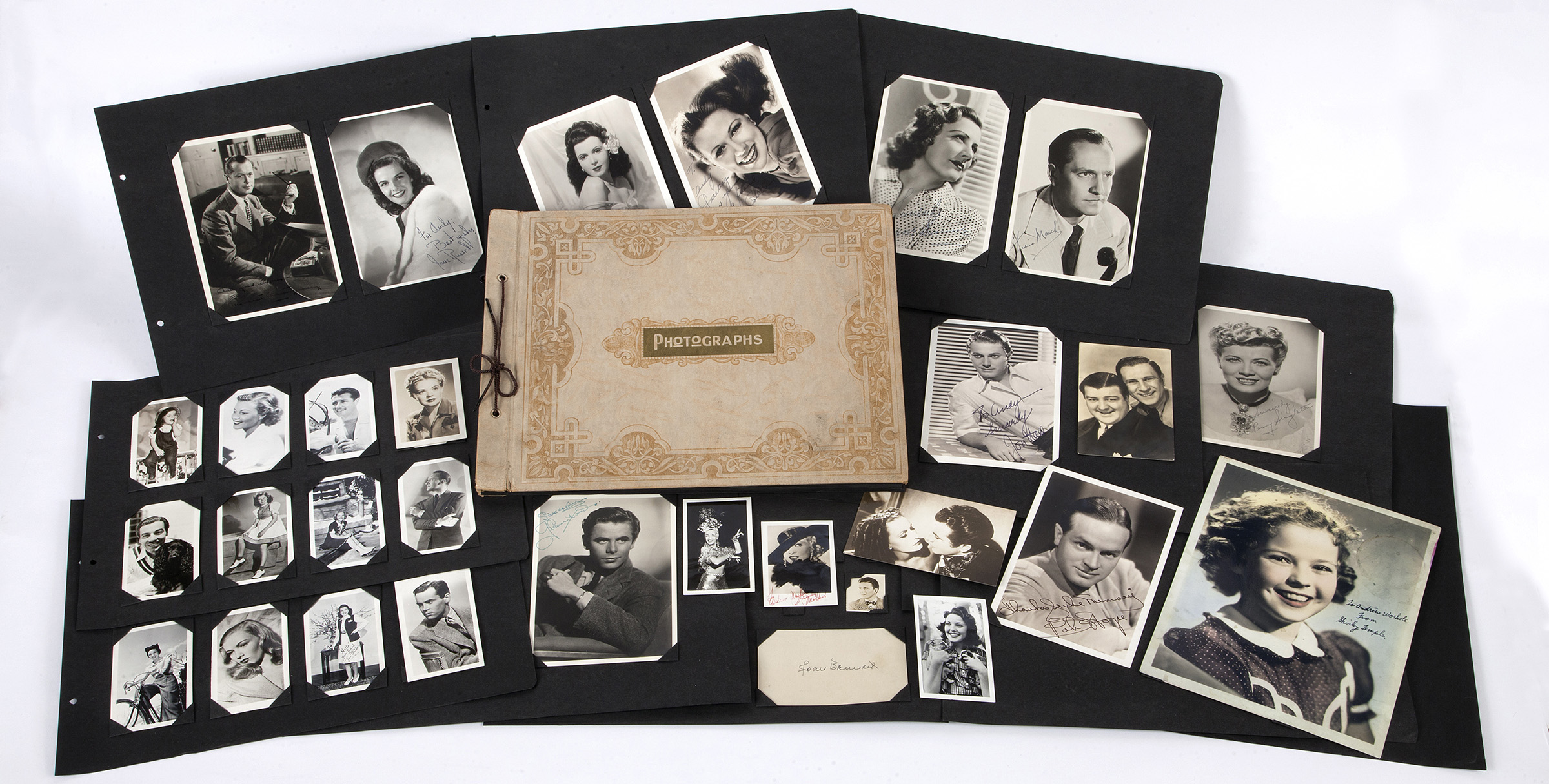
Icons on parade, art waiting to happen. Youthful Andy collected pics of movie stars; adult Andy made them subjects of his work.
Words, don’t fail me now. This is supposed to be a review of Andy Warhol: Stars of the Silver Screen, the special exhibit (through September 24) at the Andy Warhol Museum. But the show is more than an art exhibit—in the same sense that the museum is more than an art museum—and it has stirred up thoughts ranging across a spectrum from railroad trains to a former celebrity’s naked butt. I will try to cover most bases while keeping it fairly brief.
Let’s start with what the Warhol Museum really is. A previous review on the Entertainment Central website called it “a theme park of the 20th-century mind.” The museum is a house of multimedia mirrors, reflecting many facets of American consciousness (and craziness) from the mid-to-late 1900s, as channeled through the singular mind of Andy Warhol.
And while any art reflects the society in which it was made, Warhol’s especially does, because of the kind of art he created. After graduating from Carnegie Tech (now Carnegie Mellon) in 1949, and having then succeeded in New York as a commercial artist, Warhol in the late 1950s through early ‘60s caught the emerging wave of the pop art movement.
Pop consisted of borrowing images (or “memes” as we’d now say) from popular culture, anything from comic-strip panels to Campbell’s soup cans, and making them into art. It’s art that invites one to take a new and maybe different look at stuff we see and think about regularly, whether we realize it or not. Warhol quickly proved a master of this game.
You may know the Lou Reed song “I’ll Be Your Mirror,” which the Velvet Underground and Nico recorded while Warhol was managing them in the ‘60s. “I’ll be your mirror / Reflect what you are, in case you don’t know …” Warhol’s art did that, amid the evolving American culture that has spawned ours of the present.
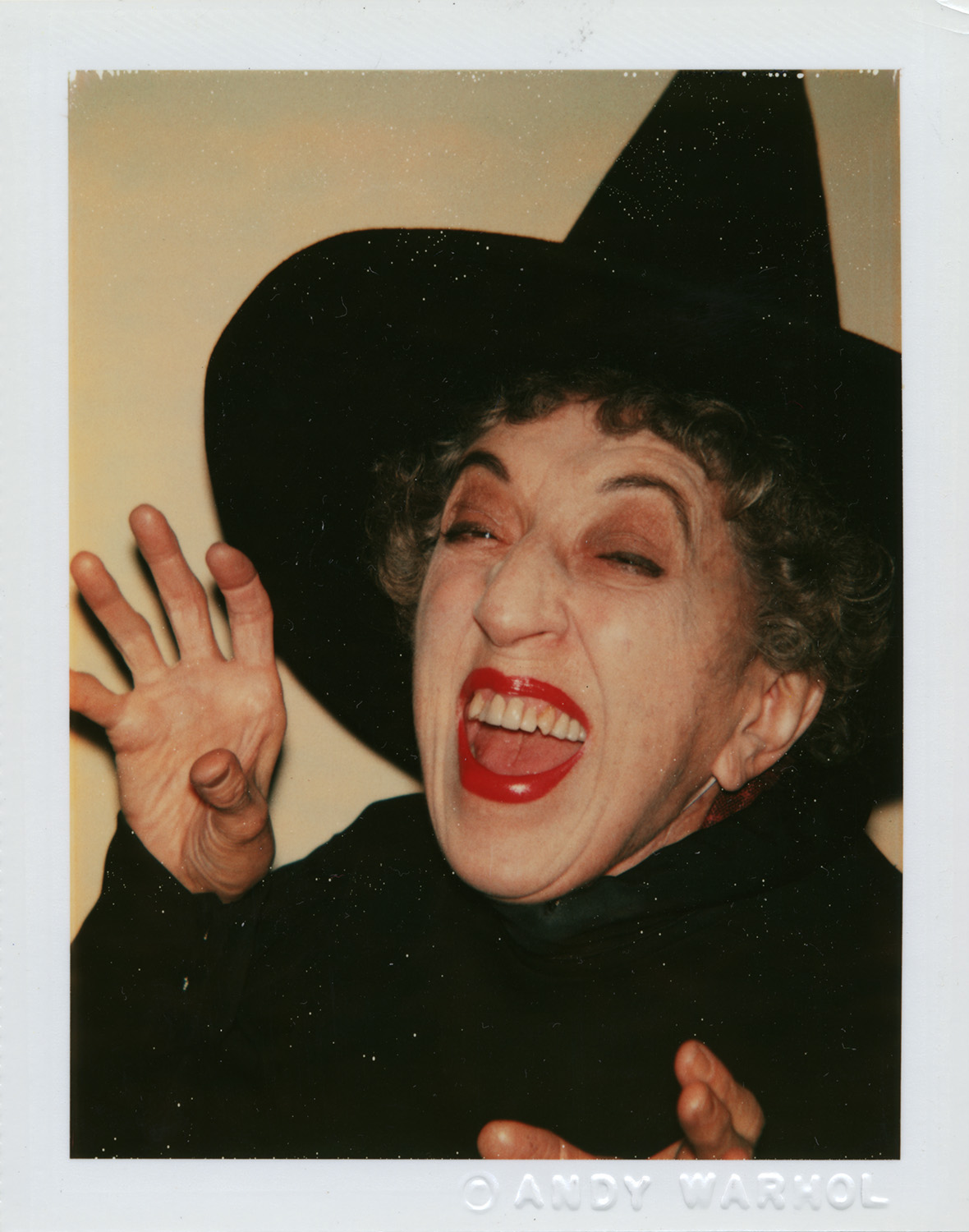
Which witch? Yep, that’s the wicked one, posing for a Warhol Polaroid in 1980.
Stars of the Silver Screen documents Warhol’s lifelong fascination with movie stars. It’s a large show filled with photos and mementos from his personal archives, as well as good samples of his related art.
The exhibit can appeal equally to those who share Andy’s star fascination, and to those for whom the fascination itself is a topic of psycho-social interest (I’m in the latter camp). Either way, it may help to go in with a bit of historical context. How did movie stars become a big deal in the first place?
In the Beginning …
Once, there were no movies. Live performance was it. Then moving pictures were brought to the public and they carved a deep emotional niche, by several means.
Although the films then were mere black-and-white affairs with no sound, they came across as more “real” than live theater. When the early dramatic short The Great Train Robbery was released, in 1903, crowds flocked to see the bandits hijacking a real train and being chased by good guys on real horses. Stage action didn’t compare.
Movies also magnified the people in them. The first films were projected on sheets hung in cramped little storefront theaters like Pittsburgh’s 1905 Nickelodeon, but big-screen theaters soon followed, making it possible to behold an awesome spectacle. You sat in the dark, watching actors who were literally larger than life.
And mass distribution multiplied their impact. When a young British actor named Charles Chaplin toured the United States as part of a live comedy troupe, he was a hit, but could only build a limited fan base at stops along the tour. Then the movies reeled him in. Chaplin’s short films began streaming out to movie houses in 1914—a new one every week or two!—and by 1915, he was reckoned the most famous person in the world. Chaplin’s on-screen character, the Tramp, drew such a widespread and sensational response that a magazine writer of the time wondered: “Is his personality the embodiment of a world-thought?”
The Artist’s Obsession
Andy Warhol was born in Pittsburgh in 1928. As a boy visiting local theaters during the ‘30s, he caught the movie bug when its potency was reaching a new peak. The films had become talkies. One’s psyche could be infiltrated by the voices of larger-than-life presences such as Clark Gable or Greta Garbo. Moreover, many stars played roles expressly written to lift the spirits of Depression-era audiences: they floated glamorously through exotic settings; they rose above hardships with a witty wisecrack or a song and dance. They embodied everything a guy or gal in the street could hope to be.
Stars of the Silver Screen shows how the youthful Andy feasted on this ethos. A display case at the entry holds fan photos he collected in his boyhood-to-teenage years. Some stars’ faces remain familiar (Carmen Miranda in a fruity hat!) and a lot are known mainly to old-movie buffs: Ann Miller, Gene Tierney, Cesar Romero, Judy Canova, Joe E. Brown.
Warhol kept collecting in adulthood. The exhibit has Photoplay magazines from the 1930s—one of them open to a big picture captioned by a rave notice for “sizzling, sparkling Miriam Hopkins, with tousled yellow curls and perfect pout!”—plus some true collector’s items: a pair of Clark Gable’s shoes, a gorgeous black-silk dress worn by Jean Harlow.
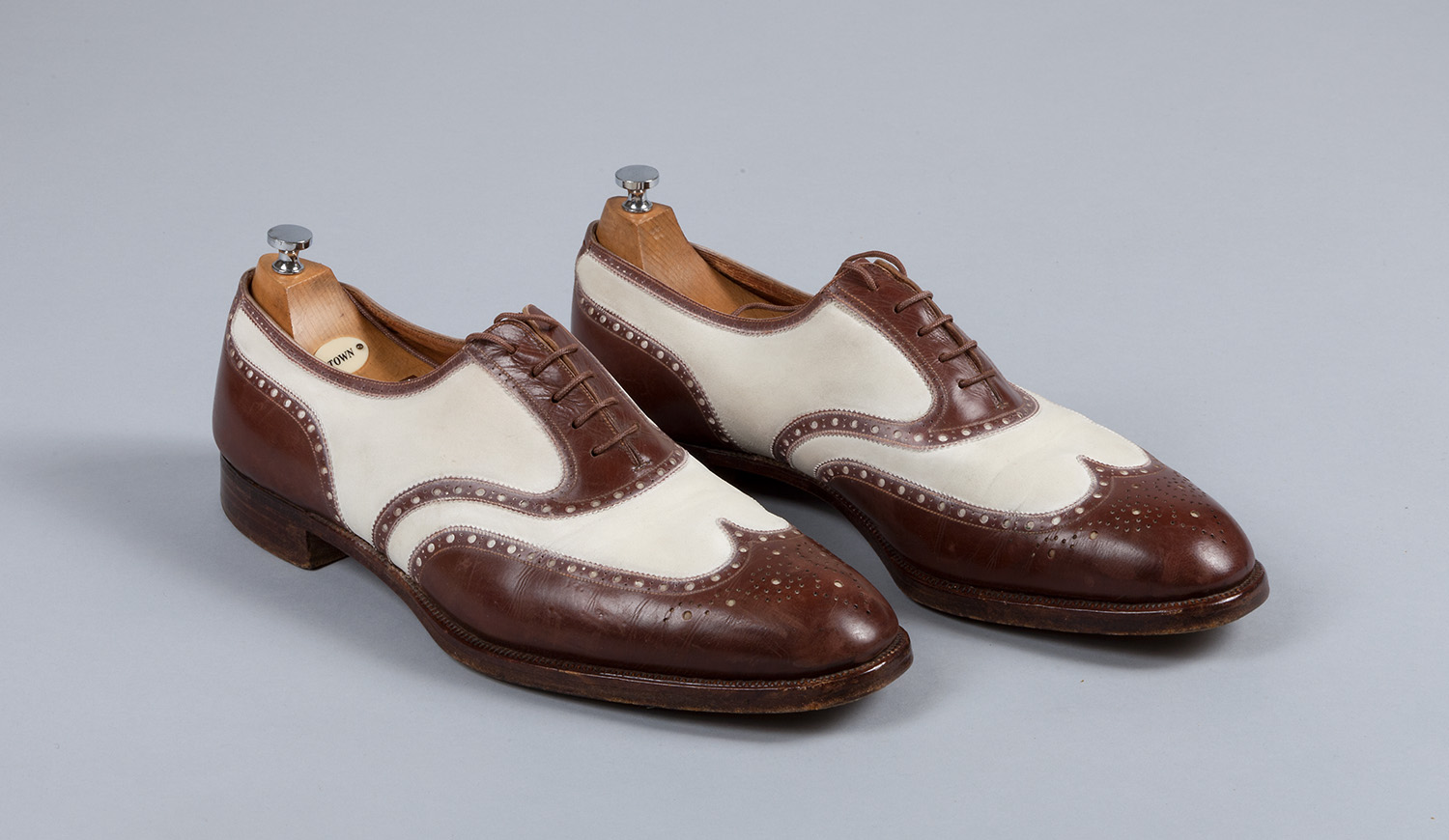
Warhol never tried to fill Clark Gable’s shoes, but he did keep the shoe trees in.
Caller ID: the Grim Reaper
Browsing the displays, I felt troubled at times by dark thoughts, not only about the fleetingness of fame but about the fleetingness of life. Maybe a dead man’s shoes were once occupied by elite feet but they are still a dead man’s shoes. And among the glitzy items is a newspaper clipping with the grim headline “Death Calls Jean Harlow.” The actress, whose last name was an anagram of “Warhol,” died in 1937 of kidney failure. She was 26.
Actors pictured elsewhere in the exhibit range from James Dean (dead at age 24, auto accident) to the 1920s child star Lawrence “Baby Snookums” McKeen Jr. (age 8, infection) to Marilyn Monroe (36, apparent overdose), and a later star of Warhol’s own films, Edie Sedgwick (28, overdose).
Surely the shadow of death is ever-present and Warhol, the artist, was quite aware of it. In the Warhol Museum galleries outside the Stars of the Silver Screen show, a particularly striking room has a group of his “Skull” paintings. They are big pieces, each depicting the same human skull on a tabletop—but each is colored in different combos of vivid pastel hues, such as aqua, coral pink, violet, and yellow. Somehow, the cheery decorator tints and the grinning skulls team up to produce a terrifying effect.
Flights of Fantasy
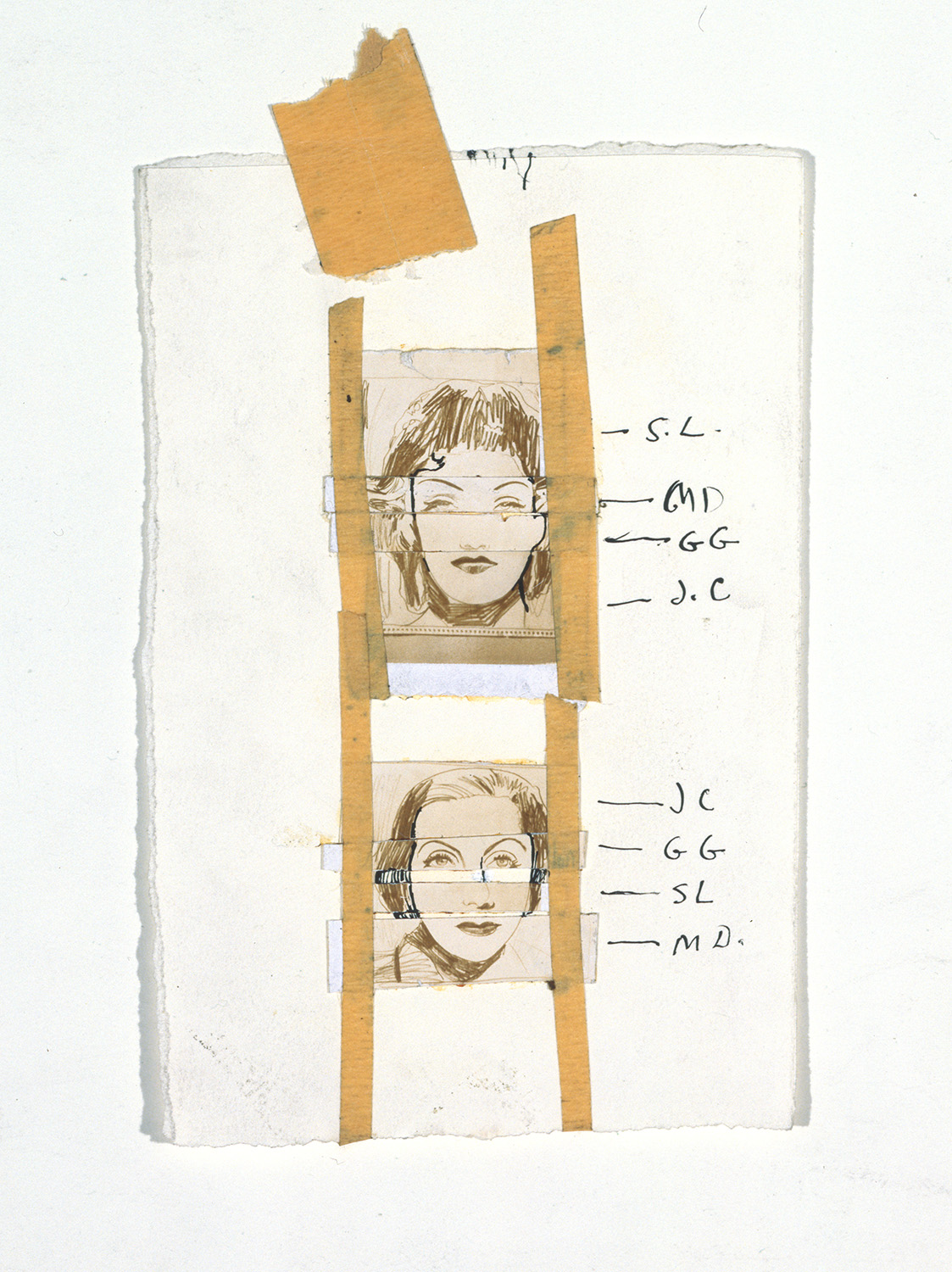
Here’s “Female Movie Star Composite.” The story explains the initials.
But let’s not let Brother Death usurp our journey. Moving on through the exhibit, the mementos of movie stars lead to samples of Warhol’s early experiments with making art from them. One piece is a simple line drawing copied from a photo. Next, the “Female Movie Star Composite” (1962) finds him cutting and pasting sections of various drawings, for instance combining Joan Crawford’s mouth with Garbo’s nose, Marlene Dietrich’s eyes, and Sophia Loren’s forehead and hairline. The result is a fantasized super-look, a feminine version of a fantasy football team.
Finally there are precursors of an art form that Warhol stuck with: photo images transferred to silkscreen and printed on a surface. A pair from 1962 feature Tuesday Weld’s face (remember her?) printed in chalky-blue ink on ivory paper, giving the portraits a classical feel reminiscent of Wegdwood china. Seldom, though, would Warhol repeat such an understated treatment. Most of his silkscreens are printed in silver or bold colors, and many are overprinted and/or painted with areas in additional colors.
Warhol used this method to mass-produce pictures of mass-market icons while “customizing” individual pieces to evoke distinct moods or highlight certain aspects of the subject. Stars of the Silver Screen includes some great examples. I’d call your attention to a double portrait of Judy Garland—one frame done entirely in a radiant, dreamy blue; the other daubed with wild streaks of multicolor—and a powerful portrait of Grace Kelly.
Before she married the prince of Monaco, Kelly was a Hollywood golden girl, and the portrait alludes to this quality by using altered natural colors. The flesh tones in her face have an ever-so-subtle golden cast, which makes her glow regally without looking jaundiced. Her blonde hair is ultra-gold. Kelly’s visage is framed against a Wedgwood blue ground (touch o’ the old classic here); the picture is a knockout.
What of Marilyn and Liz Taylor? Fear not, for these formidable women are given leading roles. An entire long wall of the show is half-Monroe, half-Taylor. Each half gives you Warhol portraits mingled with press photos, so you can compare many views of Marilyn or try to trace Liz’s eight marriages to seven husbands (Richard Burton counts twice).
The Next Level
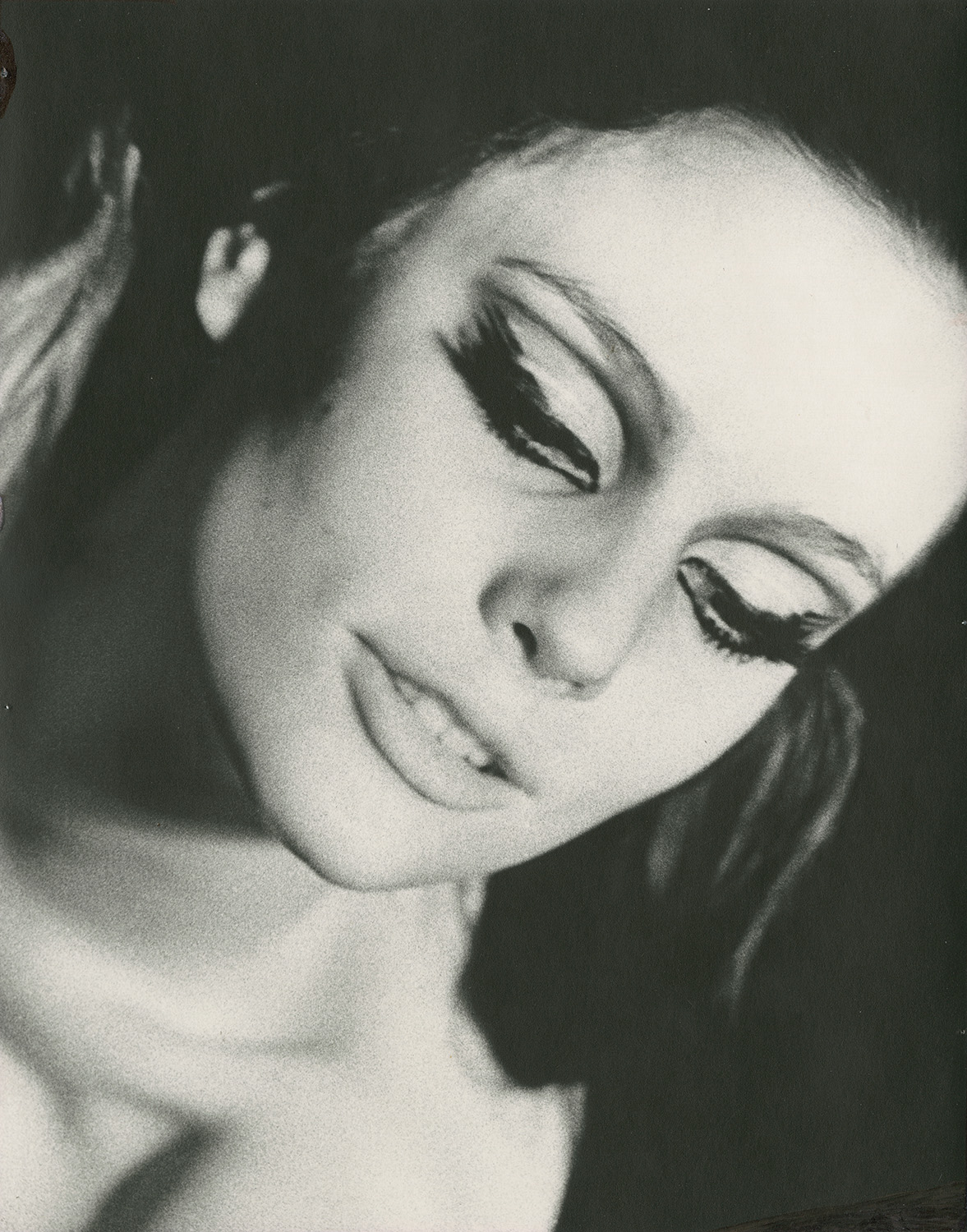
International Velvet (Susan Bottomly) was a Warhol Superstar in the late 1960s.
And there’s more! All that I’ve described, plus much that I haven’t, is on the second floor of The Warhol. Up on the sixth floor is part two of Stars of the Silver Screen. This part deals with Warhol’s ventures in turning everyday people into movie stars, through the numerous films and videos that he made.
Except they weren’t exactly “everyday” people. Very few of us have the dynamic beauty that Edie Sedgwick had, or the feral handsomeness of Joe Dallesandro. Few are as cat-clever as Ondine (a.k.a. Robert Olivo), or as eccentric as Holly Woodlawn or Taylor Mead.
These and a host of others were the highly individualistic individuals Warhol met in New York and cast as Superstars in his productions. The sixth-floor exhibit space presents still photos and movie posters of the gang. To see them in action, visit other parts of the museum, notably the Film and Video gallery on the fourth floor.
Just be advised that when you do, you’ll be entering Warhol’s kinky zone. On the day I visited, a dad was shepherding his small children past the projected image of a naked man engaged in odd contortions while being filmed from the rear. The 1964 film is called Taylor Mead’s Ass.
The Bottom Line
You can catch more of Mead in the 1968 feature Lonesome Cowboys, which saw limited theatrical release, and does not focus on train robbery—but I digress. The point of Stars of the Silver Screen is neither asses, nor cowboys, nor any specific subject matter.
It’s about fame. About the cult of celebrity and the many ways of striving to connect or identify with celebrities.
After seeing Stars of the Silver Screen, I was moved to do a couple of things. One was to cyber-meander across the Internet for somewhat longer than planned, digging up life stories and movie clips of celebrities pictured in the exhibit. (Who was May McAvoy? Why, she was a female star of the 1925 silent film Ben-Hur. Hmm, ought to watch the chariot race …)
The other thing I was moved to do was meditate upon a quotation, though not the one about everybody being famous for 15 minutes. That’s a story for another day. What came to me was a passage from a 1980 essay by George W.S. Trow, titled “Within the Context of No Context.”
In it, Trow argued that mass media had made the United States a hollowed-out society. Anything that seemed to have meaning, he said, now took place only on two planes or “grids”—the nationwide “grid of two hundred million” (roughly the country’s total population then), and the “grid of intimacy” (close personal relations)—leaving a vast void in between. Then he wrote:
“Celebrities have an intimate life and a life in the grid of two hundred million. For them, there is no distance between the two grids … Of all Americans, only they are complete.”
Andy Warhol died in 1987. He was 58. I hope he felt a sense of completion.
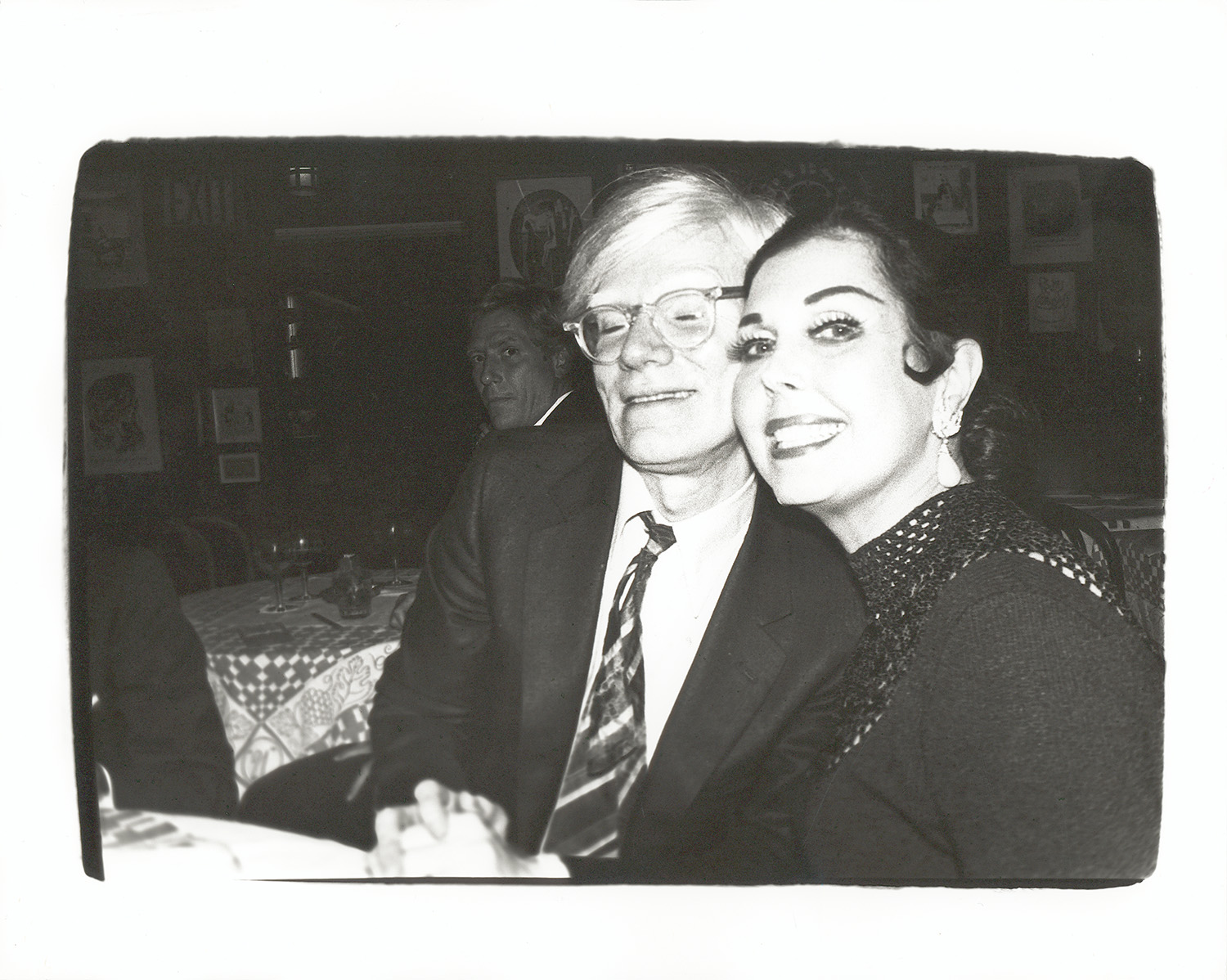
Warhol with Ann Miller, one of the many stars of silver screen he befriended.
Exhibition Credits and Visitor Info
Andy Warhol: Stars of the Silver Screen was organized by Geralyn Huxley, curator of film and video at The Warhol, and chief archivist Matt Wrbican. Through Sept. 24 in the Andy Warhol Museum, 117 Sandusky St., North Shore.
Various public events are scheduled in conjunction with the show. For more information visit the Warhol’s website or call 412-237-8300.
Photo credits—Andy’s movie star scrapbook: The Andy Warhol Museum, Pittsburgh, contribution The Andy Warhol Foundation for the Visual Arts, Inc. Polaroid “Witch,” “Female Movie Star Composite,” and Andy Warhol and Ann Miller: The Andy Warhol Museum, Pittsburgh, © The Andy Warhol Foundation for the Visual Arts, Inc. Clark Gable’s shoes: courtesy of the Andy Warhol Museum. International Velvet: by Billy Name, © Billy Name Estate, courtesy of Dagon James.
Mike Vargo, a Pittsburgh-based freelance writer, covers art and theater for Entertainment Central.
See Mike Vargo’s previous stories on The Andy Warhol Museum.
Share on Social Media
Follow Entertainment Central
Latest Stories
Sign up for the EC Newsletter







